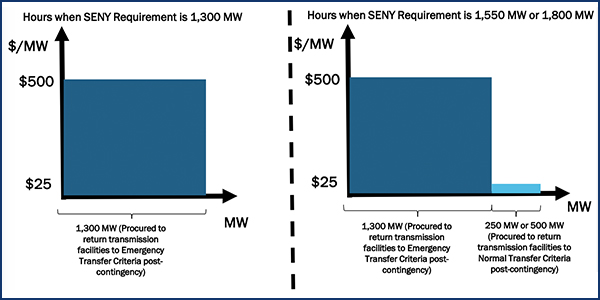NYISO management has decided to remain in remote work mode for the rest of the year, Executive Vice President Emilie Nelson told the Management Committee on Wednesday.
Nelson thanked stakeholders for their continued engagement and said the virtual meetings seem to be productive. Given the decision to continue meeting remotely, she said it makes sense to welcome any additional input, and she encouraged people to contact Mark Seibert, manager of member relations, and his team with any suggestions for improvements.
Committee OKs Additional SENY Reserves
The MC approved NYISO’s Reserves for Resource Flexibility project to increase the portion of the total statewide reserve requirement for Southeast New York (SENY, zones G-K) during certain hours from 1,300 MW to 1,550 or 1,800 MW, depending on the hour. Stakeholders in July had delayed a vote on the proposal pending additional cost analysis.
The ISO will seek to implement the new project in 2021.
“These additional reserves will help to bring transmission assets in SENY back to normal transfer criteria after suffering a contingency,” said Ethan Avallone, the ISO’s technical specialist in energy market design. “The 2,620-MW reserve requirement will remain as is [for all of the New York Control Area], and this proposal only contemplates shifting an additional portion of these reserves into SENY.”
As part of its Grid in Transition initiative, the ISO is seeking to assess and develop a variety of energy and ancillary services market design changes in response to the ongoing transition of the resource fleet in New York. (See NYISO Moves Forward on EAS Projects.)
New Siting Law Milestones for Class Year Study
The MC also approved a new regulatory milestone in its Class Year Study for any large generator that is required or eligible and elects to undergo the new siting process for major renewable energy facilities under a new state law.
The Accelerated Renewable Energy Growth and Community Benefit Act, enacted April 3, streamlines the siting of new renewable energy generation projects through a new Office of Renewable Energy Siting, supplanting determination by the Public Service Commission under Article 10 for any “Major Renewable Energy Facility.”
Thinh Nguyen, NYISO’s senior manager for interconnection projects, said the revision fills a gap in NYISO’s existing regulatory milestone requirements by creating a specific milestone for large generators meeting the definition of “Major Renewable Energy Facility” to demonstrate that their applications are deemed complete comparable to an Article 10 application.
If approved by the Board of Directors in September, the ISO will make a filing under Federal Power Act Section 205 with FERC.



